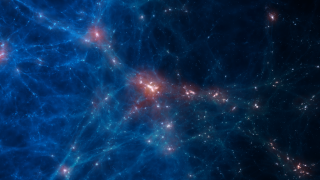Bibcode
Brook, Chris B.; Di Cintio, Arianna; Macciò, Andrea V.; Blank, Marvin
Bibliographical reference
The Astrophysical Journal
Advertised on:
9
2021
Journal
Citations
14
Refereed citations
13
Description
A central question regarding ultra-diffuse galaxies (UDGs) is whether they are in a separate category from low-surface-brightness (LSB) galaxies, or just their natural continuation toward low stellar masses. In this Letter, we show that the rotation curve of the gas rich UDG AGC 242019 is well fit by a dark matter halo with an inner slope that asymptotes to ~-0.54, and that such a fit provides a concentration parameter that matches theoretical expectations. This finding, together with previous works in which shallow inner profiles are derived for UDGs, shows that the structural properties of these galaxies are like other observed LSBs. UDGs show slowly rising rotation curves and this favors formation scenarios in which internal processes, such as supernova-driven gas outflows, are acting to modify UDG profiles.
Related projects

Numerical Astrophysics: Galaxy Formation and Evolution
How galaxies formed and evolved through cosmic time is one of the key questions of modern astronomy and astrophysics. Cosmological time- and length-scales are so large that the evolution of individual galaxies cannot be directly observed. Only through numerical simulations can one follow the emergence of cosmic structures within the current
Claudio
Dalla Vecchia